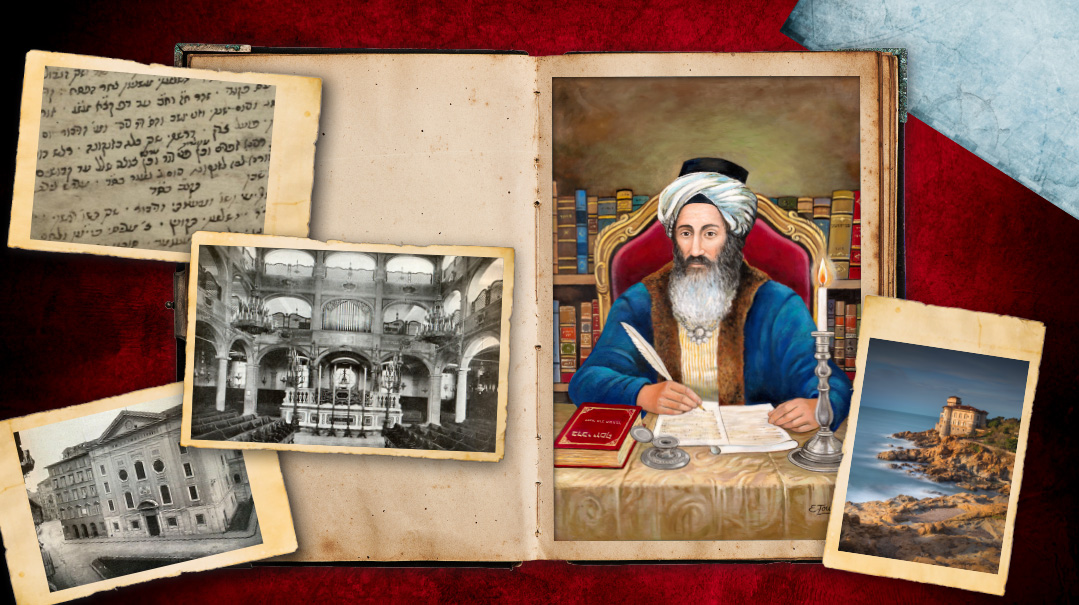The Chida’s Riddle
| March 22, 2022The blanks in an 18th century mystery are finally filled in

Although more than 200 years have passed since the passing of the Chida on Shabbos parshas Zachor, much of his rich and colorful life is still a mystery waiting to be uncovered. While until today Torah scholars toil over his dozens of books and writings, Rav Chaim Yosef David Azulai ztz”l, known by the acronym Chida, is a riddle, as his acronym (“chidah”) implies.
The Chida, who was born in Jerusalem in 1724, was one of the most prolific authors in the Torah world, having compiled over 80 seforim (60 of them in print) on an array of subjects in all areas of Torah, halachah, Aggadah and Kabbalah. He was also a meticulous researcher and bibliographer 200 years before computers could help out, and he was one of the only gedolim to pen an autobiography of his life, in the form of manuscripts that encompass and record the details of his many and varied travels. Some of those reports had been compiled into his famed travel diary, Ma’agal Tov.
A reader of this sefer flows with the ups and downs of the Chida’s life, commiserates with his challenges and rejoices in his successes and gratitude, and receives a comprehensive first-hand account of Jewish life and historical events throughout the Europe and Near East of his day.
But it turns out that this famous diary was not the end of the Chida’s story.
“Even after the sefer was printed,” says Rabbi Daniel Biton, head of the Hamaor Institute which has been republishing the Chida’s works, “the Chida continued to travel and to write. But these writings remained in hard-to-decipher manuscript form, and few people knew they even existed. Now, the time has come to reveal them and fill in the blanks.”
Far from Home
Growing up in Jerusalem, the Chida, who identified himself a Sephardi and whose works have formed the foundation of Sephardic halachic mesorah, remained strongly connected to the Ashkenazi lineage of his mother’s family (he was named after his maternal grandfather, the German gadol Rav Yosef Bialer) and served as a bridge to both traditions. From childhood, he was a student of the great kabbalists Rav Shalom Sharabi (the Rashash) and the Or Hachaim, at age 13 he was giving public Torah classes, and at 16 he wrote his first sefer.
In 1753, when only 29, the Chida was appointed as an emissary to represent the Holy Land abroad, and specifically to raise funds for the destitute, hard-pressed Jewish community in Chevron. This wasn’t the job of a shnorrer; rather, it was tremendous honor. There was a custom to send a person of great stature, inspiration and scholarship as a representative of the yishuv in Eretz Yisrael to visit Jewish communities elsewhere, both to raise funds, and to keep an interest in Eretz Yisrael on the front burner.
The Chida, who viewed this role of “shadar” (shaliach d’rabanan) as a personal obligation for the honor of Eretz Yisrael, spent five years in this first round of travel, spending time in such countries as Egypt, Italy, Germany, Holland, England, France, Sicily, Rhodes, Turkey and Syria, visiting 160 cities in all and raising significant funds for the Jews of Eretz Yisrael. And being a great lover of books and learning and having a photographic memory, the mission was also a great opportunity to spend time in the libraries of the cities he visited, studying ancient manuscripts and books.
Oops! We could not locate your form.







